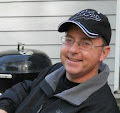My last layout, in the basement of our house on Restway, took 11 years to build and become operational. Much of that time was my waxing and waning interest, free time and tackle projects for the first time, like ballasting. As I recall, it took 2 -3 years to get a trackplan, another year to build the modules, some 4-5 years before all the track was laid. You get the picture.
Overall I enjoyed the layout and it met my desires in the space I had - but I did almost all of it alone. I finally collaborated with a couple of friends (Eric and Jack) running trains in the last 9 months before we moved and Jack helped with the scenery on a couple of the train nights we had.
This version of PRR Irwin District has been different for a couple of reasons. First, I was able to reuse a number of components from the Restway layout - modules, lighting, fascia, switches and some track, and of course I had a pretty solid collection of rolling stock and DCC locomotives at this point. Second, reconnecting with Bruce (have I mention we met as USAF lieutenants back in the late 80s?) really helped, reducing the planning stage to a few months, optimizing the trackplan for a smaller, more constrictive space than I would have been able to and helping assemble benchwork, wiring, mounting the lights and shelves, laying and testing the track, and now adding the scenery. Instead of 11 years to run complete trains, I was semi-operational in about 18 months and by 2 years was running complete trains. Also, collaborating has been huge in gaining different perspective for some of the challenges.
Every time we get together, we discuss different ideas for the scenery and Bruce almost always has a suggestion that not only did I not consider, but turns out to be really, really good. He stopped by last weekend and his ideas for East McKeesport roads and structures really appealed to me and perfectly fit the concept I had for the look of the area. What's great is that we can work on the layout with the trains continuously running on the outer and inner mainline and still make time to run some Extras to Herminie or to work a siding or two in East McKeesport.
On a funny note, sometimes I assume things because we both like model railroading. Operations is a good example. I have read dozens of articles and practiced operating schemes on a couple of railroads but while Bruce has built and run trains, he was not very familiar with car cards and waybills (CC&WB). I'm fixing that. Sunday, after talking about moving traffic around the Irwin District, he asked, "Where the heck is Uniontown anyway? You need a map to help your engineers out."
Good point ... so here is a map of the PRR Irwin District and how its situated in PA.
 |
| Map of the PRR Irwin District |





















































